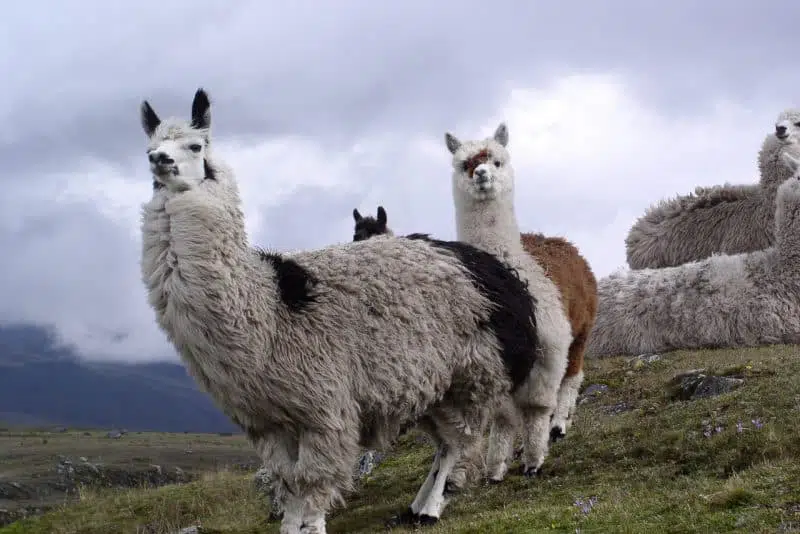Brace yourself for a wild expedition into the world of animals that start with the letter “L”! From the widely known to the undiscovered gems, join us in exploring the animals that start with L!
Read the entire article or jump to any section below.
1. Labradoodle

| Scientific Name | Canis lupus familiaris |
| Where It Lives | Worldwide |
| What It Eats | High-quality dog food and animal protein |
| Conservation Status | Not Endangered |
Fun Fact: The breed was initially created as a hypoallergenic service dog.
The Labradoodle, an adorable cross between a poodle and a labrador, originated in Australia and can be found in homes worldwide today.
These dogs are naturally curious and energetic, making them great companions for children or adults with active lifestyles. Especially since they require exercise due to their energy levels. These dogs are also very intelligent and love learning new things!
2. Labrador Retriever

| Scientific Name | Canis lupus familiaris |
| Where It Lives | Wordlwide |
| What It Eats | High-quality dog food and animal protein |
| Conservation Status | Not Endangered |
Fun Fact: According to the American Kennel Club, the Labrador Retriever is the most popular dog breed.
Labrador Retrievers originated in the United Kingdom during the 1800s where they used to help fishermen work and have shown to be wonderful guide dogs in recent years.
Known for its high energy levels, this canine companion thrives on regular exercise. While inherently friendly and trusting, its amiable nature may not lend itself to being an effective guard dog. These lovable dogs are a wonderful addition to any family!
3. Ladybug
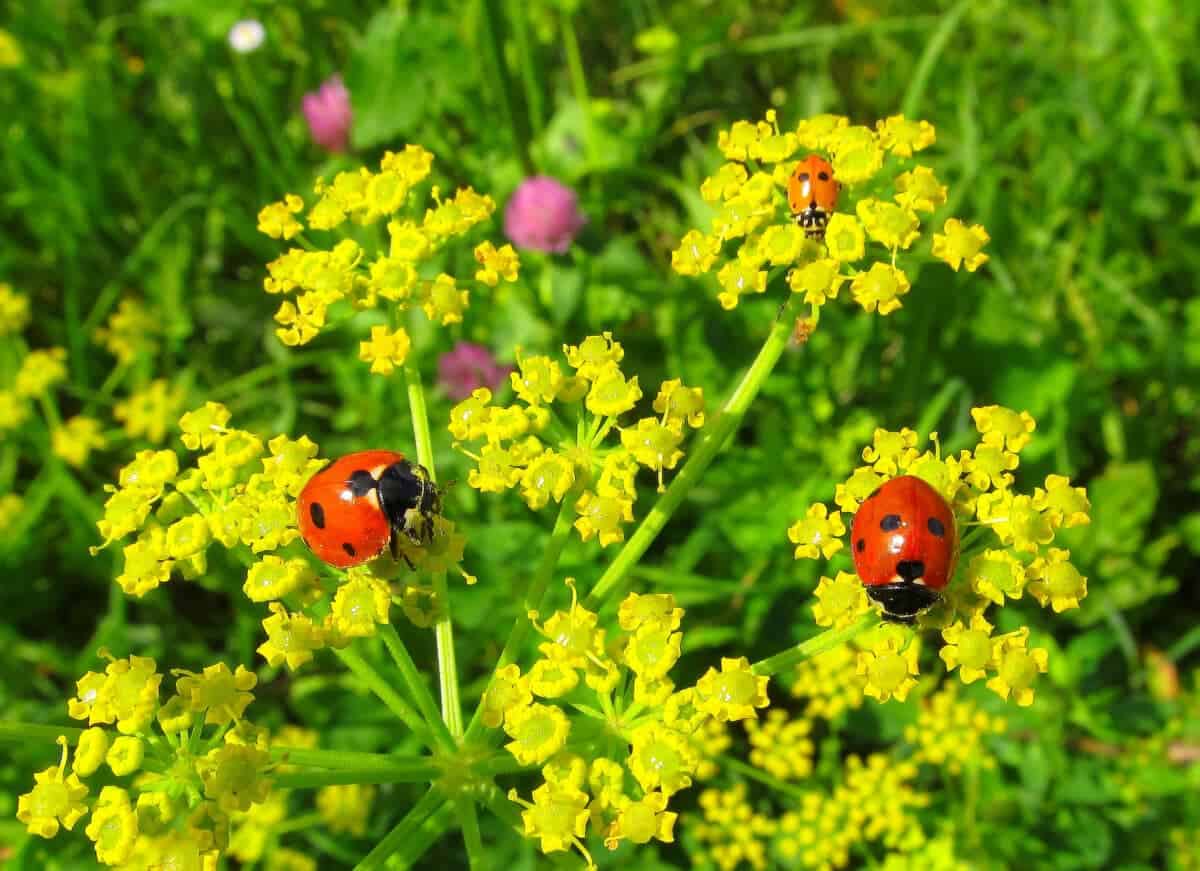
| Scientific Name | Coccinellidae |
| Where It Lives | Worldwide |
| What It Eats | Smaller insects |
| Conservation Status | Not Evaluated (NE) according to the IUCN Red List |
Fun Fact: States like Massachusetts, New Hampshire, Tennessee, Delaware, and Ohio have the ladybug as their state insect.
There are more than 5,000 species of ladybugs found worldwide living in gardens, meadows, yards, pastures, and forests.
They are known for their brightly-colored and patterned elytra which is believed to be a symbol of good luck, especially if one comes and lands on you! The amount of spots on their red bodies differs between species, and they only live for about 2 years.
4. Lamprey
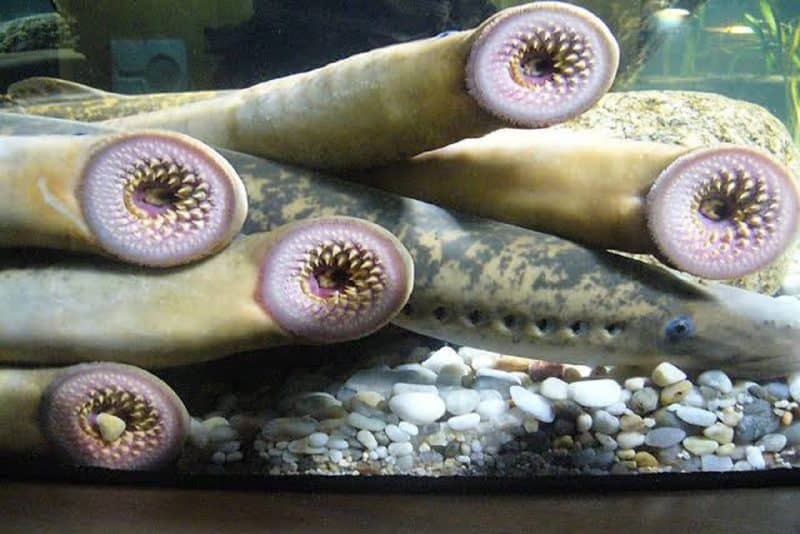
| Scientific Name | Petromyzontiformes |
| Where It Lives | Northern Hemisphere |
| What It Eats | Lake Fish |
| Conservation Status | Least Concern (LC) according to the IUCN Red List |
Fun Fact: During reproduction, male lampreys wrap themselves around females to squeeze out eggs.
The Lamprey is also known as the vampire fish and lives part of their life in saltwater and others in freshwater in the Northern Hemisphere.
This is a parasitic saltwater animal that feeds on the blood of other fish, widely known for its round, jawless, sucker-like mouth. Despite their scary appearance, this fish is deemed a delicacy in certain parts of the world.
5. Leech
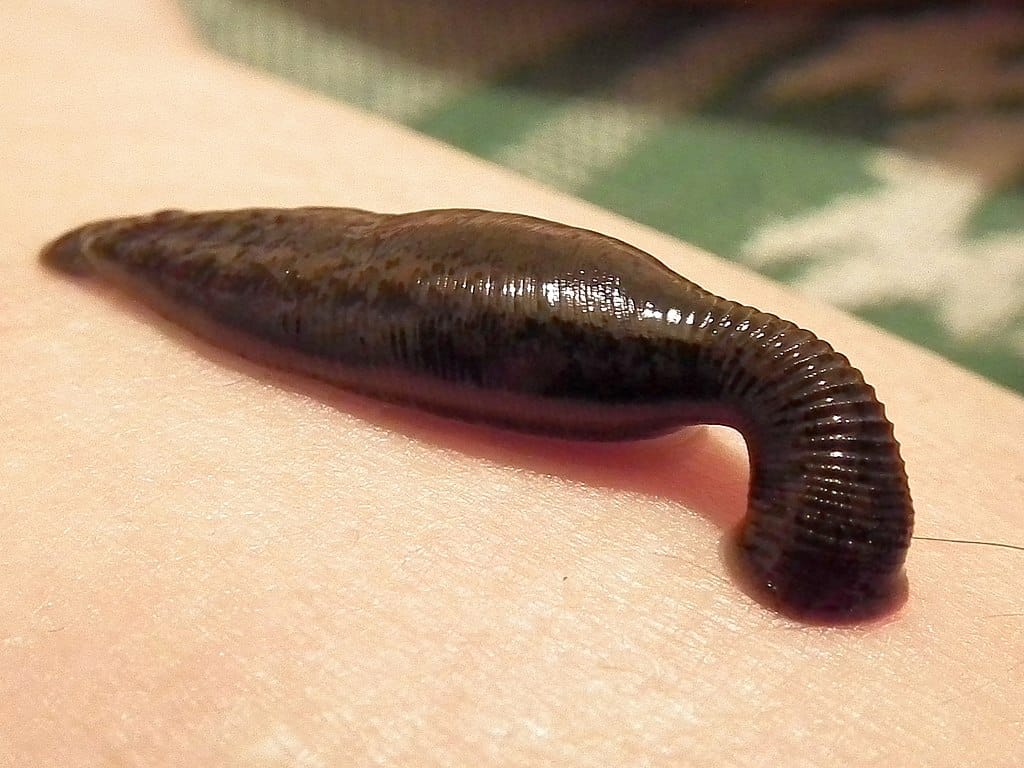
| Scientific Name | Hirudinea |
| Where It Lives | Worldwide |
| What It Eats | Mammals, insects, fish |
| Conservation Status | Least Concern (LC) according to the IUCN Red List |
Fun Fact: Leeches have ten eyes but still have poor vision.
Leeches are aquatic worms that can be found around the world, except Antarctica, where they inhabit freshwater lakes and ponds, oceans, and moist soil.
These predatory blood-sucking parasites can as long as 6 months without feeding. When they do feed they suck blood from their prey, with suckers located on each end of their bodies! Despite their bad reputation, leeches have been used in medical practices for years!
6. Lemming
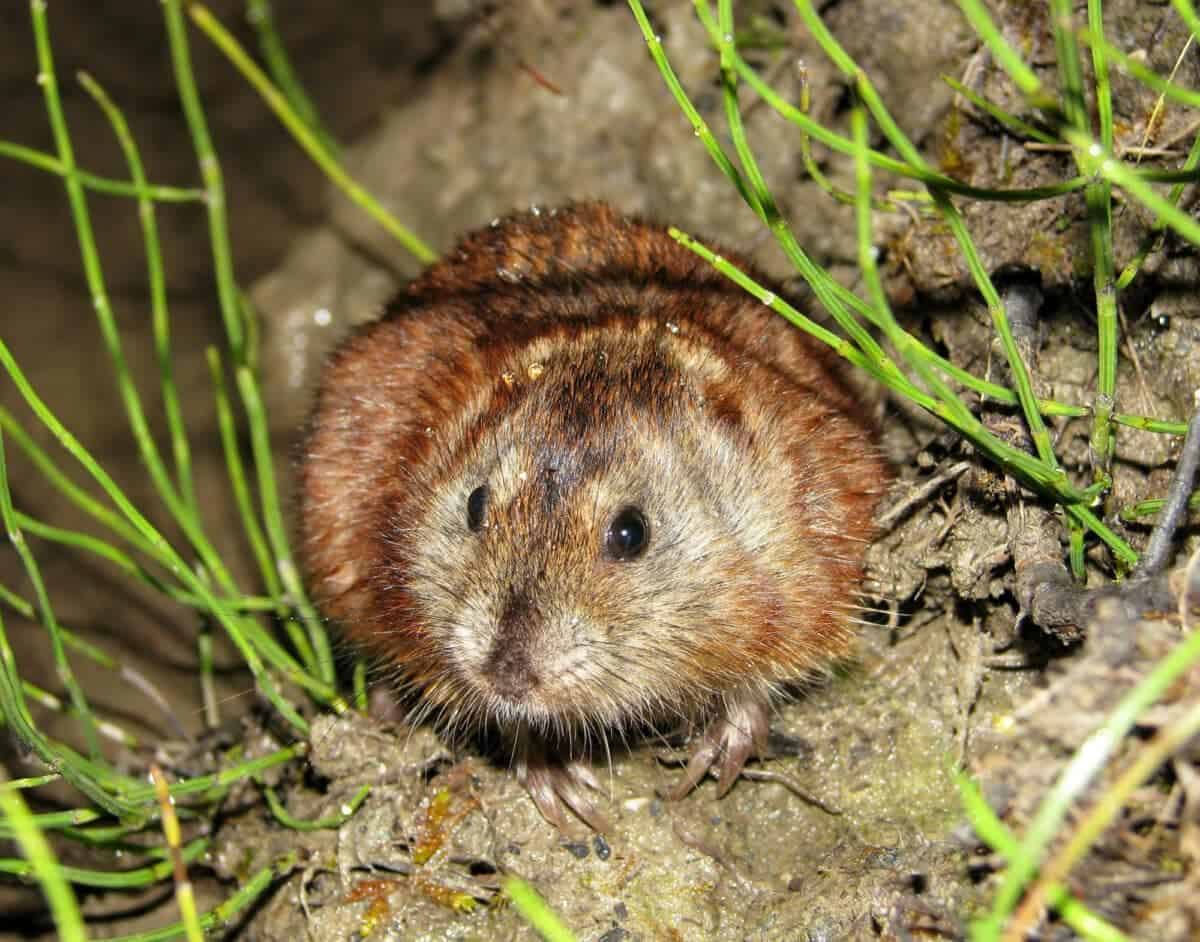
| Scientific Name | Lemmus Lemmus |
| Where It Lives | Europe, North America |
| What It Eats | Berries, grass, seeds |
| Conservation Status | Near Threatened (NT) according to the IUCN Red List |
Fun Fact: Lemmings can reproduce within less than a month of being born themselves.
The tiny Lemming is a rodent living in and around the freezing Arctic Circle.
Even though they live in freezing temperatures, these animals do not hibernate and lead solitary lives. Only socializing when it is time to mate, which can be as soon as a month after they were born themselves!
7. Lemur
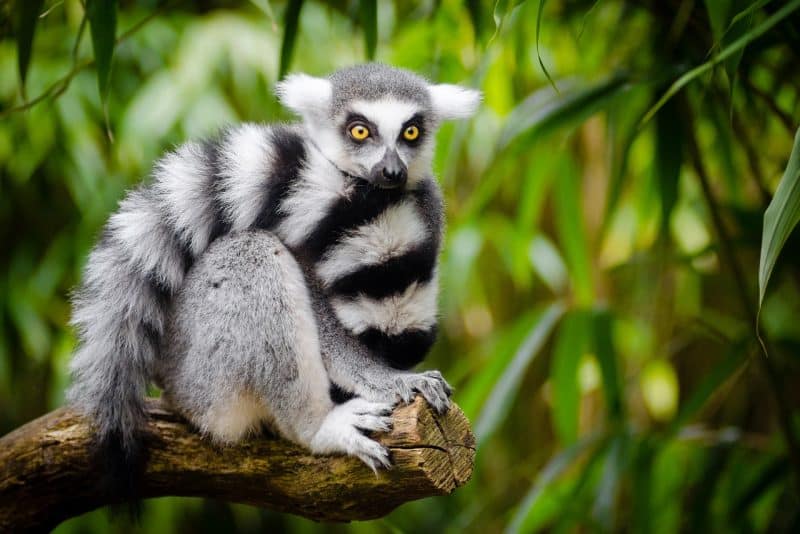
| Scientific Name | Lemur catta |
| Where It Lives | Madagascar |
| What It Eats | Leaves, plants, flowers, fruit, nectar, insects, small birds |
| Conservation Status | Endangered (EN) according to the IUCN Red List |
Fun Fact: Lemurs are one of the few animals that live in a matriarchal society, with one female leading the troop.
Lemurs are native to the tropical forests of Madagascar island.
Lemurs are nocturnal, fox-like creatures with narrow white faces. They have pointed ears and a small, moist nose, and their tails can be much longer than their bodies. Lemurs have opposable thumbs that help them grip onto the trees they live in. These primates are born with blue eyes that change color as they age.
8. Leopard
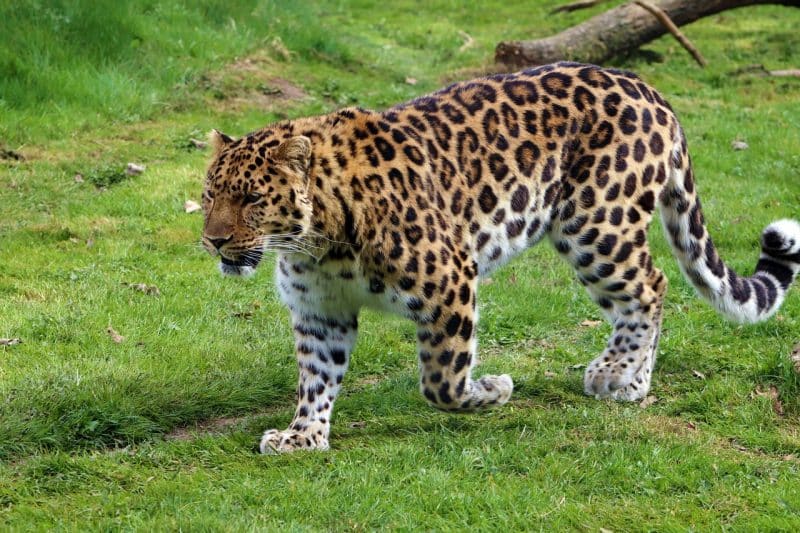
| Scientific Name | Panthera pardus |
| Where It Lives | Africa, Asia |
| What It Eats | A wide variety of other animals |
| Conservation Status | Vulnerable (VU) according to the IUCN Red List |
Fun Fact: Leopards were initially thought to be hybrids of the lion and jaguar.
Leopards are native to sub-Saharan Africa and Southern Asia, where they live in a wide range of habitats from savannas to rainforests to grasslands to semi-desert regions.
These opportunistic hunters are well adapted to their predatory lifestyle. They can run at speeds of 36mph, but normally hunt by stalking their prey, pouncing and suffocating them. These solitary animals then carry their prey to the safety of treetops, where other predators and scavengers can’t steal their food.
9. Leopard Frog
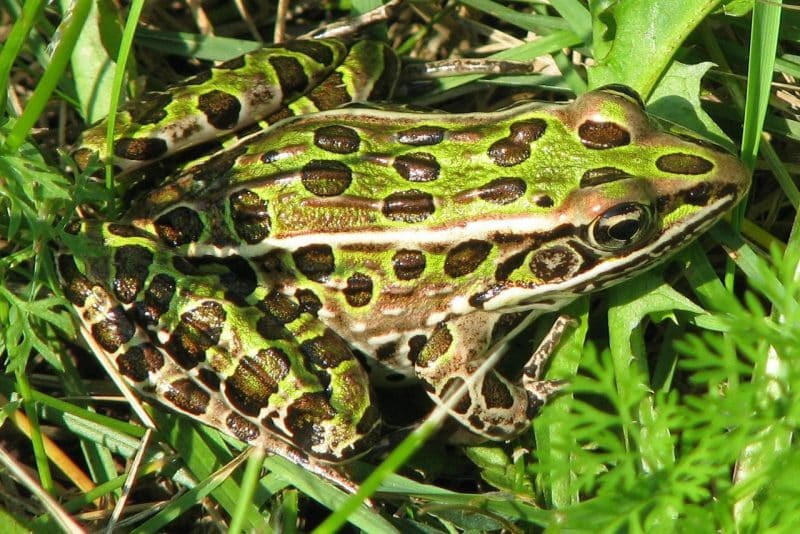
| Scientific Name | Lithobates |
| Where It Lives | North, Central and South America |
| What It Eats | Insects, worms, mollusks, birds, snakes |
| Conservation Status | Least Concern (LC) according to the IUCN Red List |
Fun Fact: They can jump as high as three feet!
The Leopard Frog, with its incredible jumping ability, can be found in forests, wetlands, and grasslands in the Americas.
Just like their namesake, these frogs have leopard-like spots all over their bodies. During the winter these solitary frogs hibernate and can go without eating for as long as three months! The male makes a sound like a human snore when he calls for a mate during the breeding season.
10. Liger
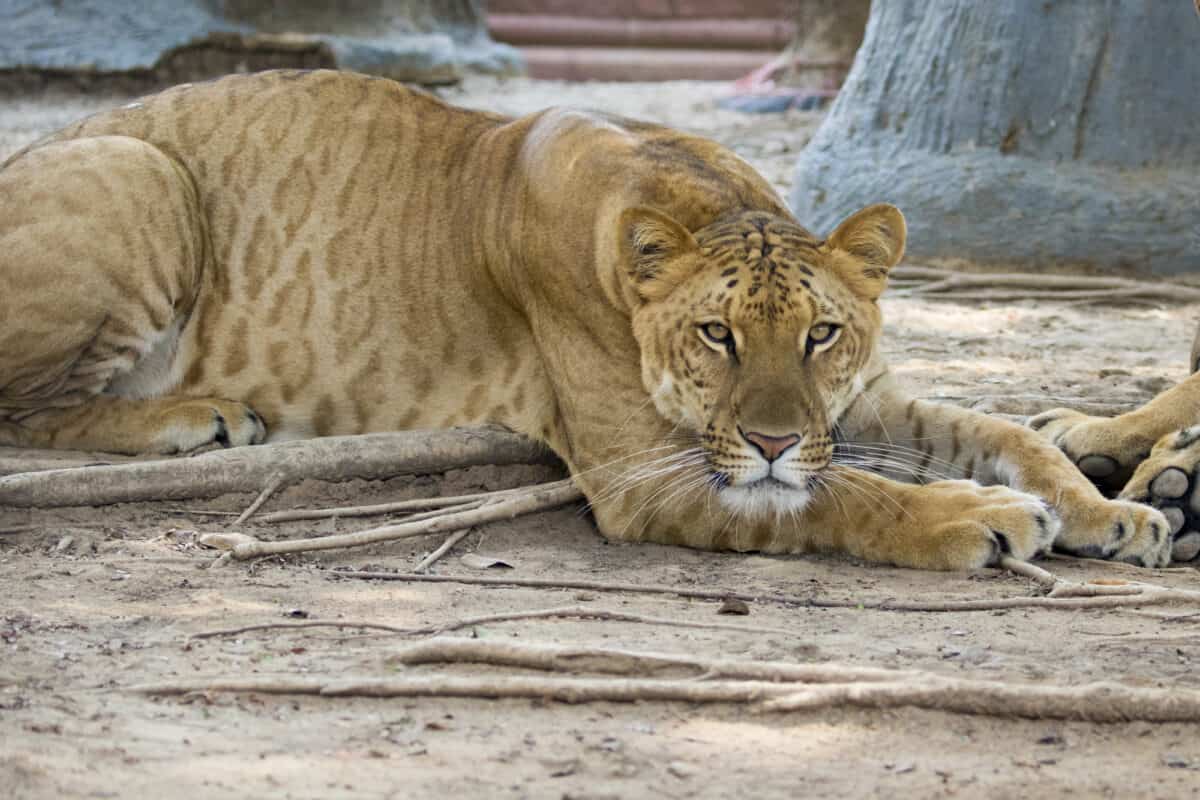
| Scientific Name | Panthera leo × Panthera tigris |
| Where It Lives | Sanctuaries, Zoos |
| What It Eats | Deer, cattle, boar |
| Conservation Status | Not Listed (NL) according to the IUCN Red List |
Fun Fact: Unlike its ferocious parents, it is pretty gentle.
The Liger is a cross between a male lion and a female tiger, and can only be seen in zoos and sanctuaries. Due to these parent animals living in different parts of the world, they do not occur in the wild.
These massive animals have broad heads and muscular bodies. They take after their father, the lion, more than their mother. However, they do have a light stripe on their coats.
11. Lion
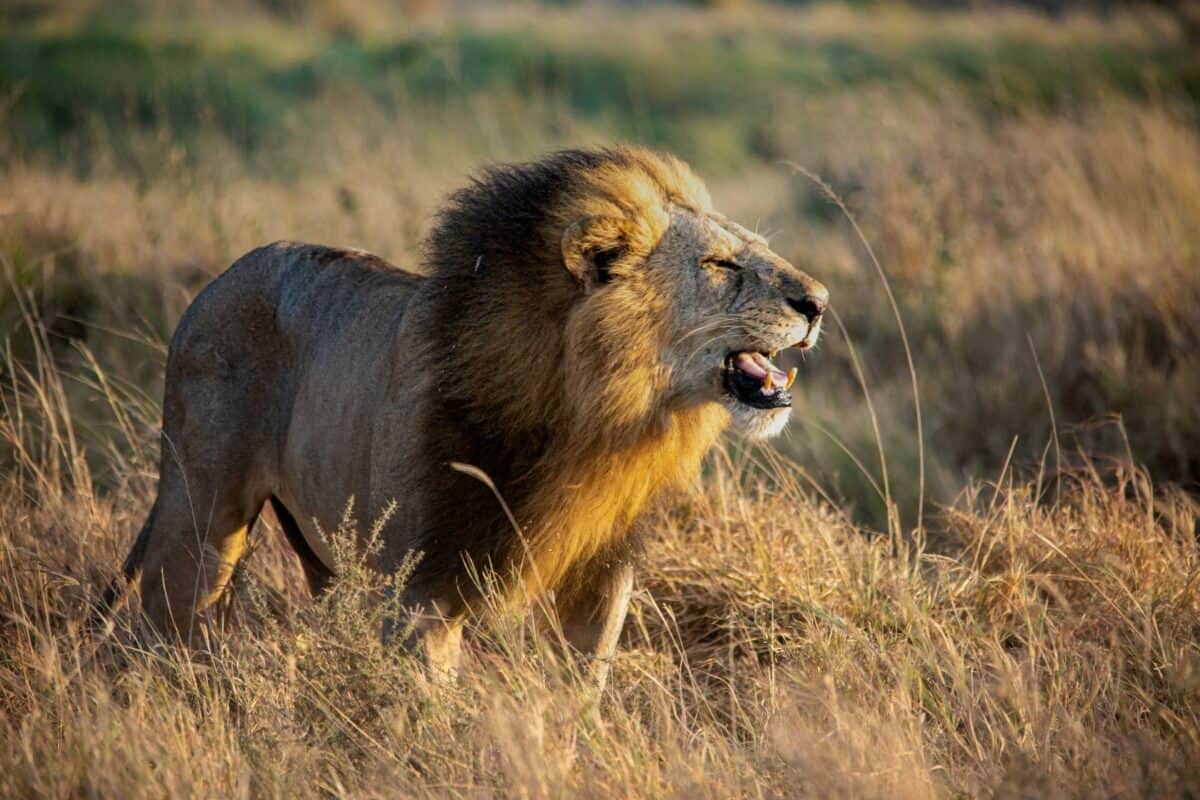
| Scientific Name | Panthera leo |
| Where It Lives | Sub-Saharan Africa, South Asia |
| What It Eats | Zebra, gazelle, antelope, deer, buffalo, widebeest |
| Conservation Status | Zebra, gazelle, antelope, deer, buffalo, wildebeest |
Fun Facts: Lions have been kept in zoos since as early as the eighteenth century in England.
The mighty Lion lives in grassy plains, savannas, and open bushland in sub-Saharan Africa and India.
One of the male lion’s most distinctive features is its glorious mane, which they develop at around 3 years of age. They cohabit in small groups called prides. Most members of the pride are females who are responsible for hunting while the males defend their territory.
12. Lionfish
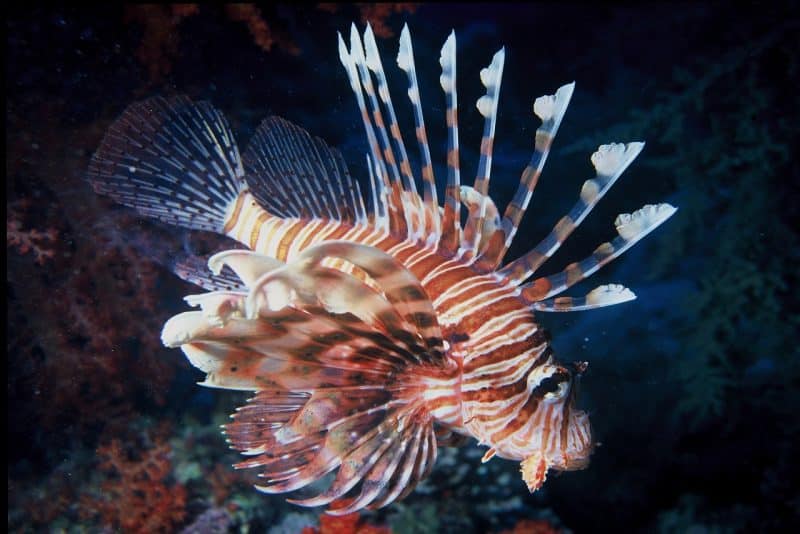
| Scientific Name | Pterois volitans |
| Where It Lives | Tropical and subtropical waters |
| What It Eats | Crabs, fish, shrimp |
| Conservation Status | Least Concern (LC) according to the IUCN Red List |
Fun Fact: It has a vicious venom that can cause severe symptoms in humans, making it one of the deadliest fish species in the ocean.
The Lionfish can be found in rocky crevices and tropical reefs, usually not deeper than 500 feet, in tropical and subtropical oceans around the world.
Known for its striped body markings and long spines, their appearance makes them a popular choice for aquariums! Their long spines release a powerful venom to ward off predators.
13. Lizard
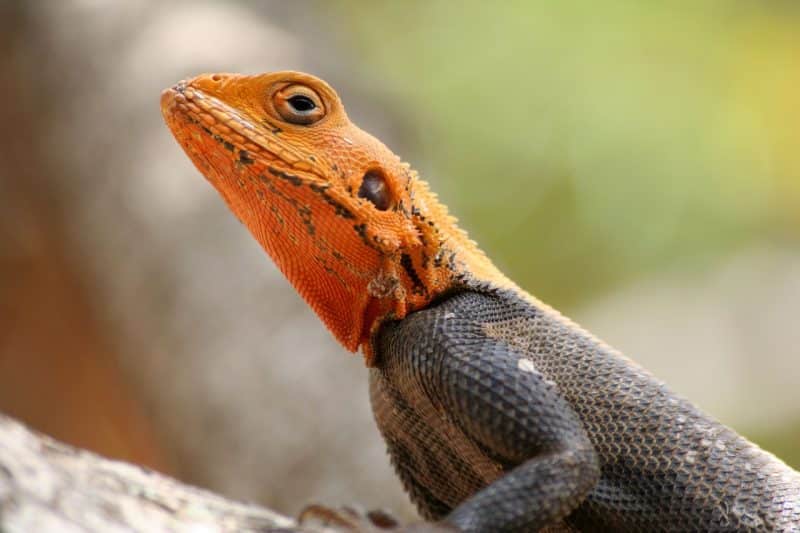
| Scientific Name | Lacertidae |
| Where It Lives | Worldwide |
| What It Eats | Insects, birds, rodents |
| Conservation Status | Various listings for the different species |
Fun Fact: Many species can change their color to camouflage themselves.
There are over 5,000 Lizard species distributed in various habitats across the world.
Lizards can be seen in many different colours ranging from dull brown to bright orange, depending on their respective habitats. Some of their characteristics include their external ear opening and their scaly skin which acts as their protection and seals in water to prevent them from dehydrating in the heat.
14. Llama
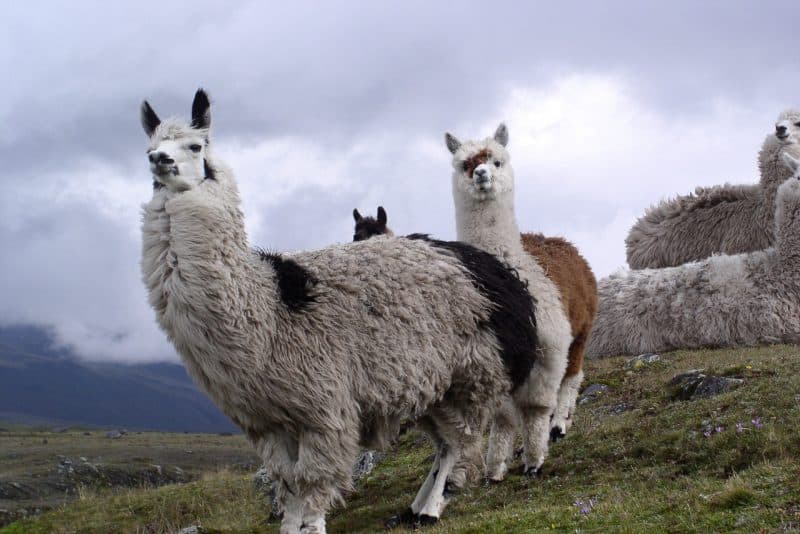
| Scientific Name | Lama glama |
| Where It Lives | South America |
| What It Eats | Vegetation, shrubs, lichens |
| Conservation Status | Not Evaluated (NE) according to the IUCN Red List |
Fun Fact: Llamas are the only species scientists say humans can hug safely, as they are incredibly loving animals.
Llamas, native to South America, are no longer found in the wild but only in as domesticated pets and farm animals.
These wooly animals are highly social and live in groups with a dominant male. Llamas are extremely vocal, making a variety of different sounds when communicating with each other, during breeding and fighting. They are also spitters and will do so to end an argument or females will spit at males to chase them away.
15. Lobster
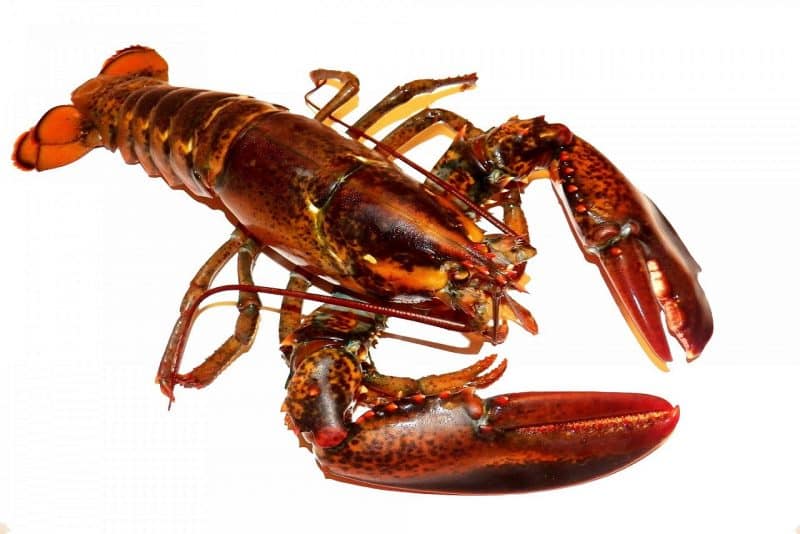
| Scientific Name | Nephropidae |
| Where It Lives | Worldwide |
| What It Eats | Starfish, clams, mussels |
| Conservation Status | Least Concern (LC) according to the IUCN Red List |
Fun Fact: A lobster’s underbelly is as strong as car tires.
Lobsters roam the floors of oceans around the world.
These crustaceans have a very interesting anatomy, their brains are in their throats and their teeth are inside their stomachs! In the wild lobsters have a brownish color that allows them to blend with their habitat, it is only after cooking that they turn the characteristic red we think of them.
16. Locust
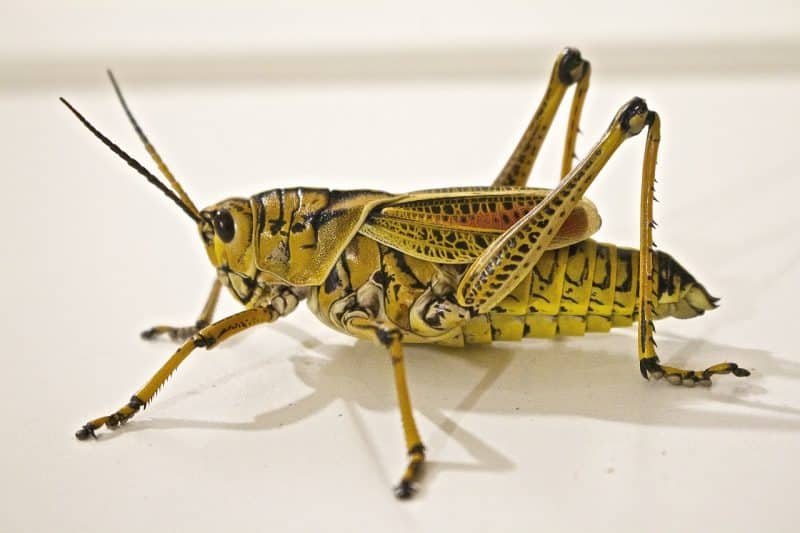
| Scientific Name | Acrididae |
| Where It Lives | Worldwide |
| What It Eats | Leaves, grasses |
| Conservation Status | Least Concern (LC) according to the IUCN Red List |
Fun Fact: These insects are some of the oldest bugs, staying relatively unchanged since the Triassic era.
Locusts are a subset of grasshoppers that can be found around the world, except for Antarctica and North America.
These insects live in large groups called swarms, which are notorious for the destruction they cause to fields and farmlands. These tiny animals can munch through their body weight in food a day, and some species even turn cannibalistic when food is scarce.
17. Lorikeet
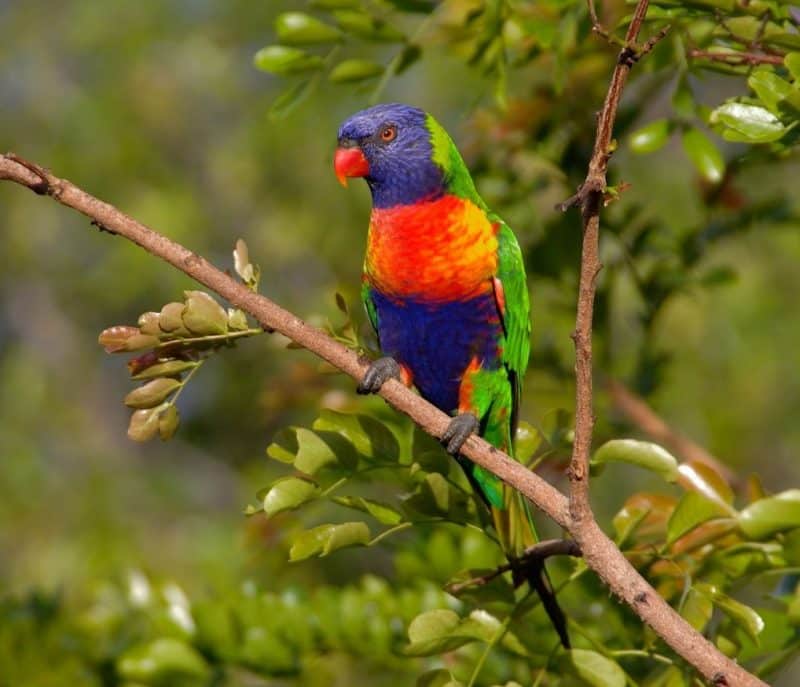
| Scientific Name | Psittaculidae |
| Where It Lives | Australia, Southeast Asia |
| What It Eats | Flowers, nectar, fruit, pollen, insects |
| Conservation Status | Least Concern (LC) according to the IUCN Red List |
Fun Fact: The lorikeet is an accomplished acrobat. It can hang upside down to gather food.
The lorikeet inhabits the forests, woodlands, and coastal bushes of Australia and Southeast Asia.
These brightly colored birds have long, brush-like tongues and specialized beaks that allow them to crush flowers, making access to pollen and nectar easier. Lorikeets are very social birds travelling as far as 30 miles a day in their groups searching for food. Oh, and they are noisy!
18. Loon
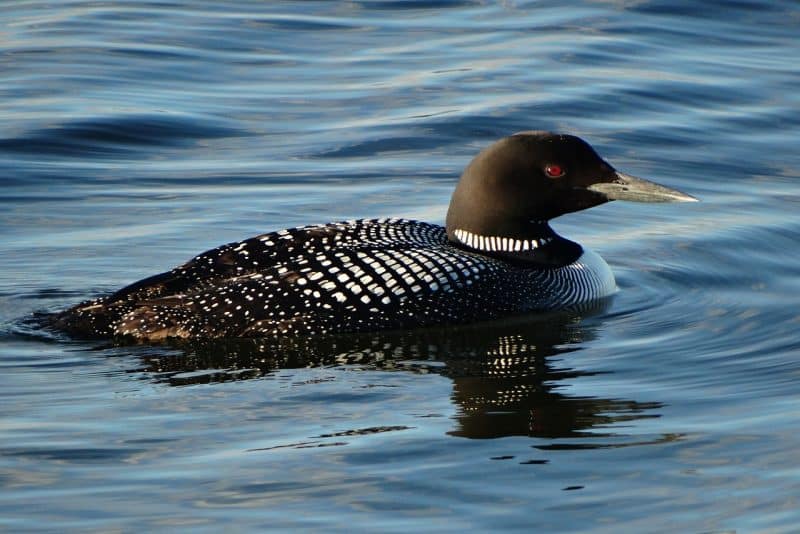
| Scientific Name | Gavia Immer |
| Where It Lives | North America, Europe |
| What It Eats | Frogs, fish, insects |
| Conservation Status | Least Concern (LC) according to the IUCN Red List |
Fun Fact: They produce an eerie, haunting call that some associate with early summer.
The Loon is an aquatic diving bird that lives in the freshwater lakes of North America and Europe.
These birds are incredible divers and can dive as deep as 200 feet to catch a fish! During mating season the normally black and white plumage of the male birds can take on impressive patterns to lure a mate.
19. Lyrebird
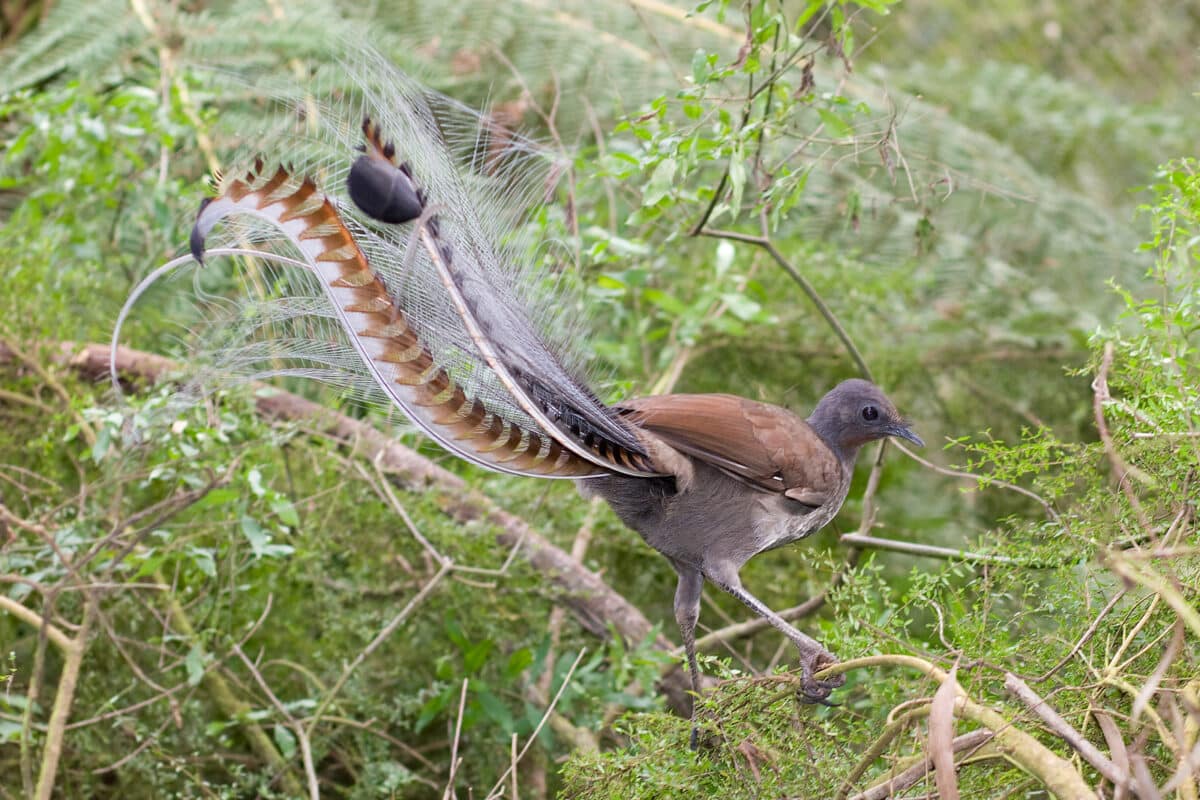
| Scientific Name | Menura |
| Where It Lives | Australia |
| What It Eats | Invertebrae, lizards, forgs |
| Conservation Status | Near Threatened (NT) according to the IUCN Red List |
Fun Fact: There is a Lyrebird displayed behind the Australian ten-cent coin.
Lyrebirds live in dense and temperate forests and rainforests in Australia.
These long-tailed birds spend most of their time on the ground, as their wings aren’t very strong – they climb to their nests in trees! These solitary birds are incredible mimickers, copying almost any sound they hear. Which comes in handy when birds of prey are close!
20. Lynx
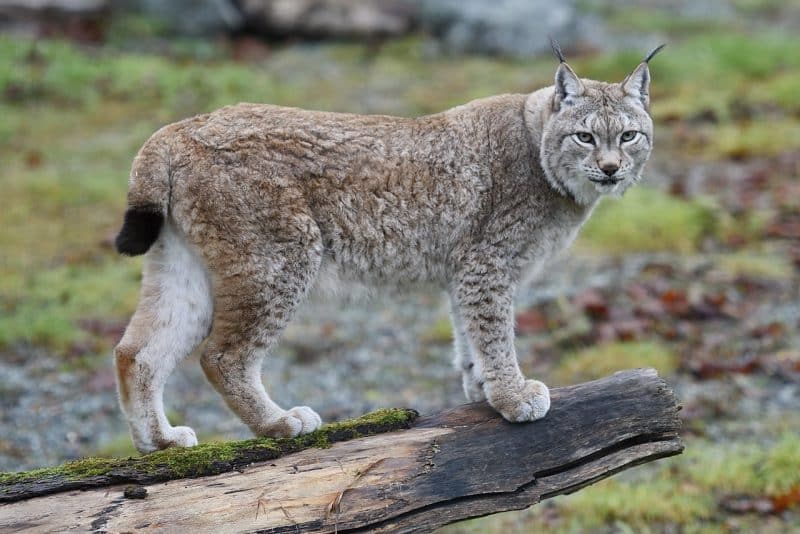
| Scientific Name | Lynx canadensis |
| Where It Lives | North America |
| What It Eats | Hare |
| Conservation Status | Least Concern (LC) according to the IUCN Red List |
Fun Fact: Lynxes have furry paws that act as natural snowshoes for their feet.
Lynx, a wild cat, inhabits dense forests in Canada and Northern America.
These carnivores are opportunistic feeders and are known for their furry paws, stubby tails, and long ear tufts. These animals live solitary lives and are rarely heard outside of their mating season. During this males will scream for hours at a time to decide who will be breeding the available female.
Summary of Animals that Start with L
We hope you enjoyed this list as much as we did. See you next time, but before you leave, you might want to take a look at this list of exotic animals that start with r.
Thank you for reading animals that start with l. Get all Alphabetical Animals here:
- Animals That Start With A
- Animals That Start With B
- Animals That Start With C
- Animals That Start With D
- Animals That Start With E
- Animals That Start With F
- Animals That Start With G
- Animals That Start With H
- Animals That Start With I
- Animals That Start With J
- Animals That Start With K
- Animals That Start With M
- Animals That Start With N
- Animals That Start With O
- Animals That Start With P
- Animals That Start With Q
- Animals That Start With R
- Animals That Start With S
- Animals That Start With T
- Animals That Start With U
- Animals That Start With V
- Animals That Start With W
- Animals That Start With X
- Animals That Start With Y
- Animals That Start With Z
Thank you for reading!
- Explore The Azores - April 22, 2024
- The 4 Best Places to See Jaguars - April 19, 2024
- Wildlife of Sweden - April 19, 2024

